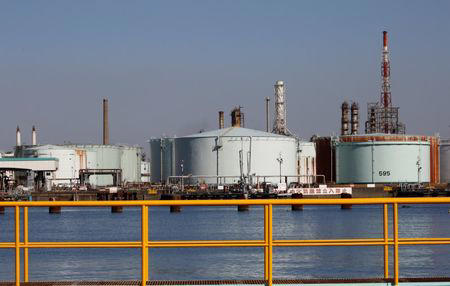Oil prices experienced a modest rebound in Asian trading on Wednesday, recovering slightly from recent declines. This uptick was driven by market expectations of tighter oil supply in the near term, supported by industry data showing a reduction in U.S. oil inventories. Brent crude futures for September delivery rose by 0.5% to $81.40 per barrel, while West Texas Intermediate (WTI) crude futures increased by 0.4% to $76.22 per barrel. This recovery follows a period of significant losses, with both benchmarks falling to their lowest levels since early June.
The recent downturn in oil prices has been influenced by several factors. Foremost among them is the forecasted oil surplus anticipated for 2025, which has overshadowed current market conditions. Concerns over a potential supply glut, coupled with economic uncertainties, have weighed heavily on the market. Additionally, geopolitical developments, particularly the ongoing conflict between Israel and Hamas, and uncertainties surrounding China’s economic recovery have also contributed to the bearish sentiment.
A notable factor behind Wednesday’s price recovery is the unexpected draw in U.S. oil inventories reported by the American Petroleum Institute (API). According to the API, U.S. oil inventories decreased by 3.9 million barrels for the week ending July 19, defying expectations of a 0.7 million barrel increase. This marks the fourth consecutive week of inventory declines, suggesting an uptick in oil demand, likely driven by increased travel and consumption during the summer season. The API data also revealed significant reductions in gasoline and distillate inventories, indicating that demand in the U.S. remains robust. This trend is expected to be corroborated by the official inventory report from the Energy Information Administration (EIA), due later on Wednesday.
Despite these short-term positive signals, the broader outlook for oil markets remains cautious. Morgan Stanley has projected a potential oil surplus by early 2025, forecasting that crude prices may trend in the high $70s by next year. This forecast is underpinned by anticipated increases in global oil production and the prospect of softened demand from China. Recent economic data from China has shown slower-than-expected growth for the second quarter, with a sharp decline in oil imports in June. Moreover, the Chinese Communist Party’s Third Plenary session has provided limited guidance on potential new stimulus measures, adding to market uncertainty.
China’s economic challenges have been a significant concern for the oil markets. The country’s slower economic recovery and reduced oil imports have raised questions about future demand. Additionally, there is growing uncertainty about how potential changes in U.S. administration could impact relations and policies towards China, further complicating the market landscape.
In summary, while oil prices showed some recovery on Wednesday, driven by an unexpected draw in U.S. inventories and strong demand signals, the overall market outlook remains complex and fraught with uncertainty. Factors such as the forecasted surplus, geopolitical tensions, and economic uncertainties in major markets like China continue to influence oil price dynamics, making for a nuanced and evolving market environment.
